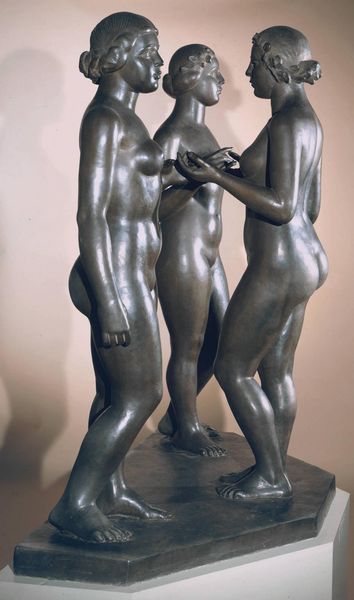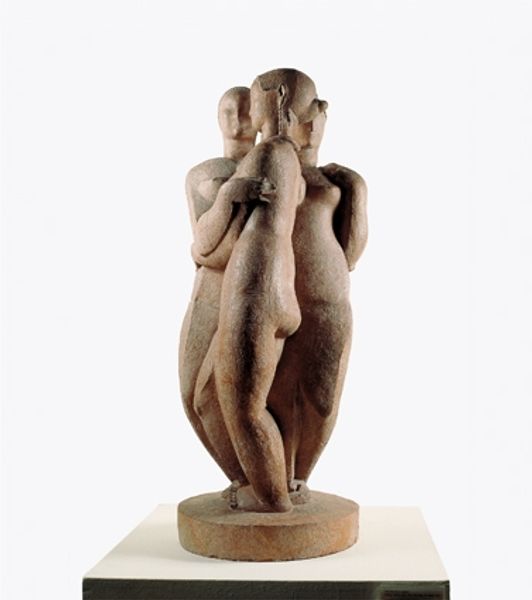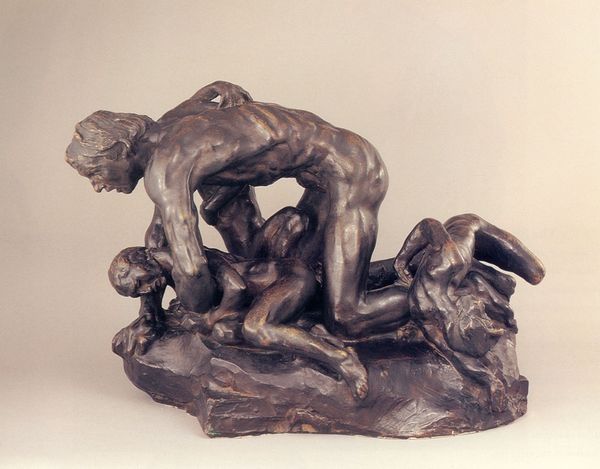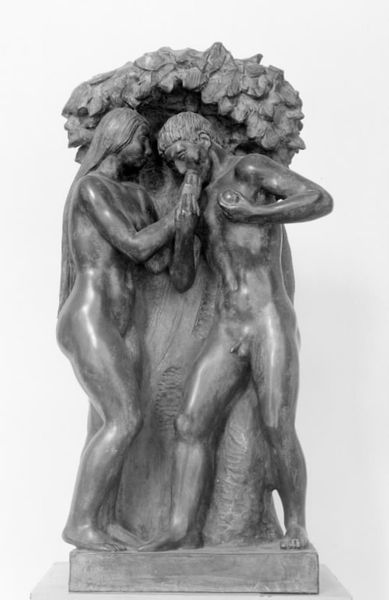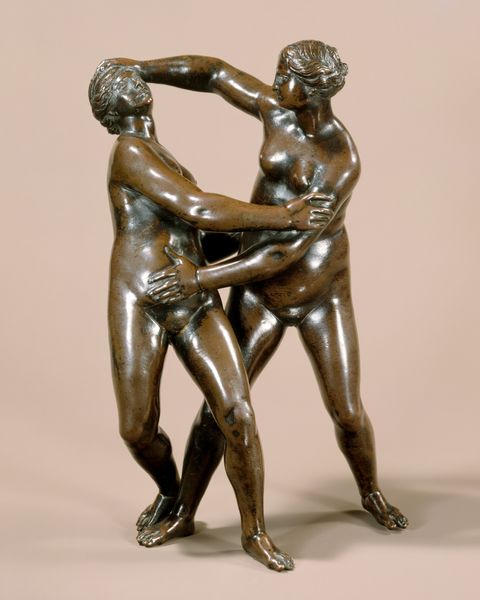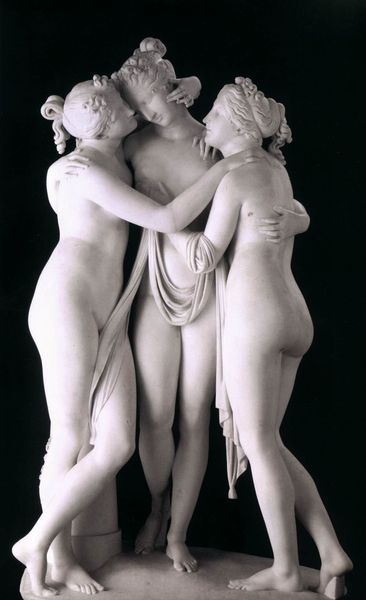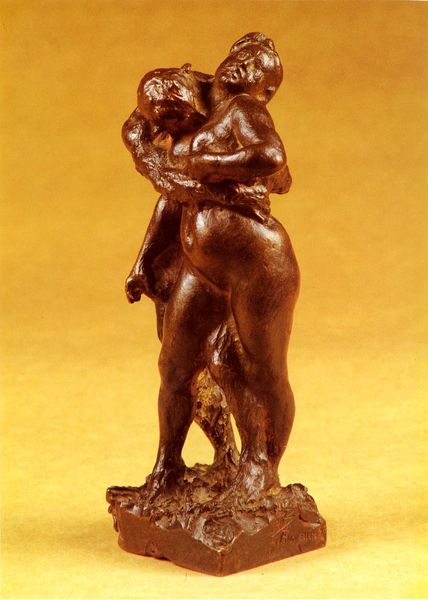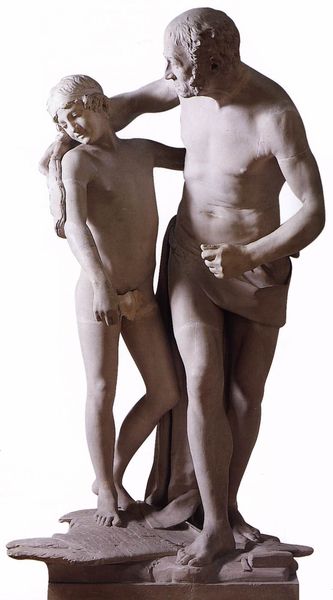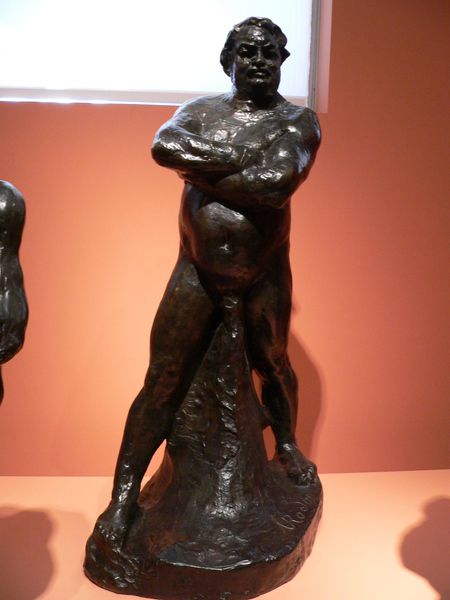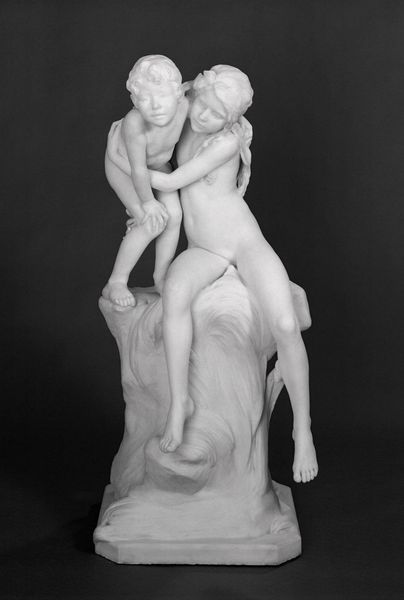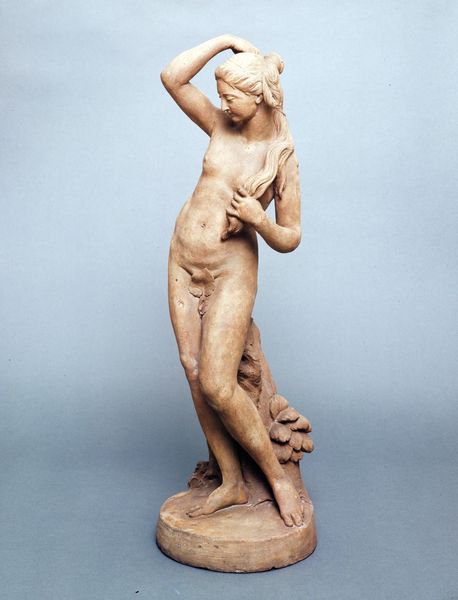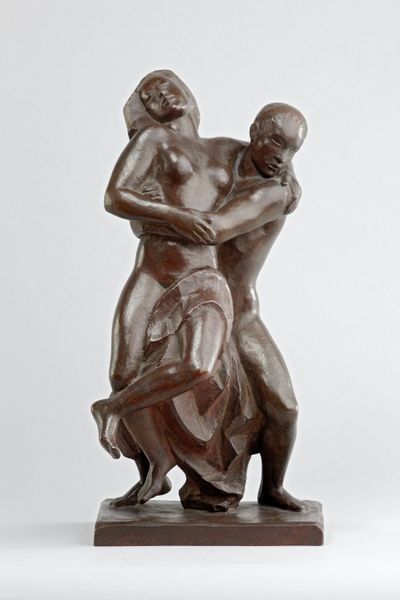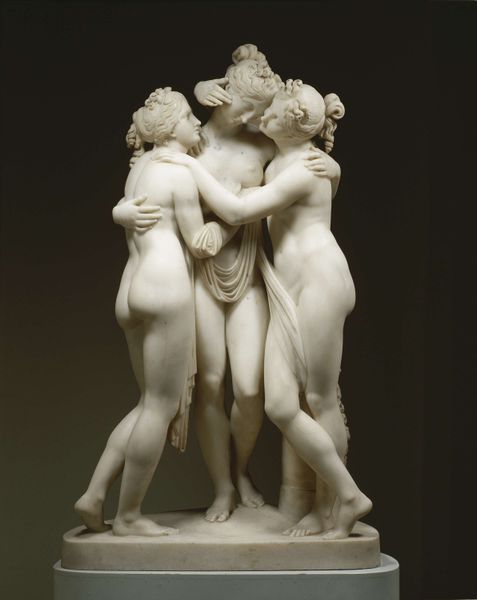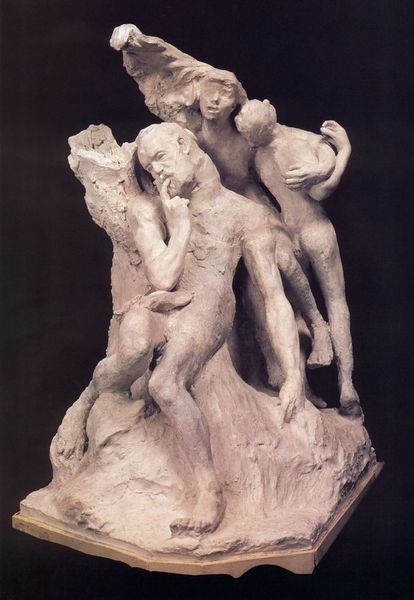
bronze, sculpture
#
sculpture
#
classical-realism
#
bronze
#
figuration
#
sculpture
#
nude
Dimensions: 62 x 57 x 31 in. (157.5 x 144.8 x 78.7 cm)
Copyright: No Copyright - United States
Editor: This is "The Three Nymphs" by Aristide Maillol, created sometime between 1930 and 1938. It's bronze, and there's a captivating weightiness to their forms, a grounded feeling despite the idealized subject matter. What catches your eye about it? Curator: What interests me most is how Maillol used bronze. Its ability to be molded and cast allowed him to reproduce and distribute his work, a democratization of art in a way. Considering the societal upheaval between the 1930s, how does this accessibility, via the materials used, reflect changing social values towards art consumption? Editor: That’s interesting! I hadn’t thought about bronze as being a vehicle for accessibility. But doesn't the classical subject matter push back against that democratizing notion, returning the artwork to the sphere of elitism? Curator: That's a fair point. But the simplification of form, reducing the figures to almost geometric shapes through the labor involved in the creation of such simplified but life size forms—is that really purely elitist? Or is he subtly challenging established classical ideals by imbuing this very expensive material with a labor intensive simplification? Think about how that bronze was sourced, cast, and finished. Where did that happen? Editor: So you’re saying the means of production complicates the interpretation? Where the work was made, and by whom? I guess I assumed a singular artist shaping it all. Curator: Precisely! Considering that changes our understanding. Were the hands shaping these nymphs his alone, or many, and what does that tell us about the role of the artist within an evolving economic landscape and what classicality really means in light of material processes. Editor: I see now. Examining the bronze, its casting, even the implications of reproduction – it gives a totally different perspective than just considering its aesthetic qualities or subject matter. It’s about the hands and resources that brought it into being! Curator: Exactly! Art exists within networks of production and consumption, shaped by material and labor. Considering those networks offers powerful insights.
Comments
minneapolisinstituteofart almost 2 years ago
⋮
Throughout his career, Aristide Maillol drew inspiration from the female form. His Three Nymphs recall the Three Graces of Greek mythology - personifications of grace, charm, and beauty. He also followed classical precedent by showing the three figures clasping hands and dancing. Maillol rejected the roughly textured surfaces favored by such earlier sculptors as Rodin for the smoothly swelling forms of ancient Greek sculpture. Maillol's massive figures convey a classical serenity and repose, which also contrasted with the vigorous intensity and drama of Rodin's or Degas' sculptures. The three women here all share the same sturdy form, yet each has slight facial and physical differences.
Join the conversation
Join millions of artists and users on Artera today and experience the ultimate creative platform.
